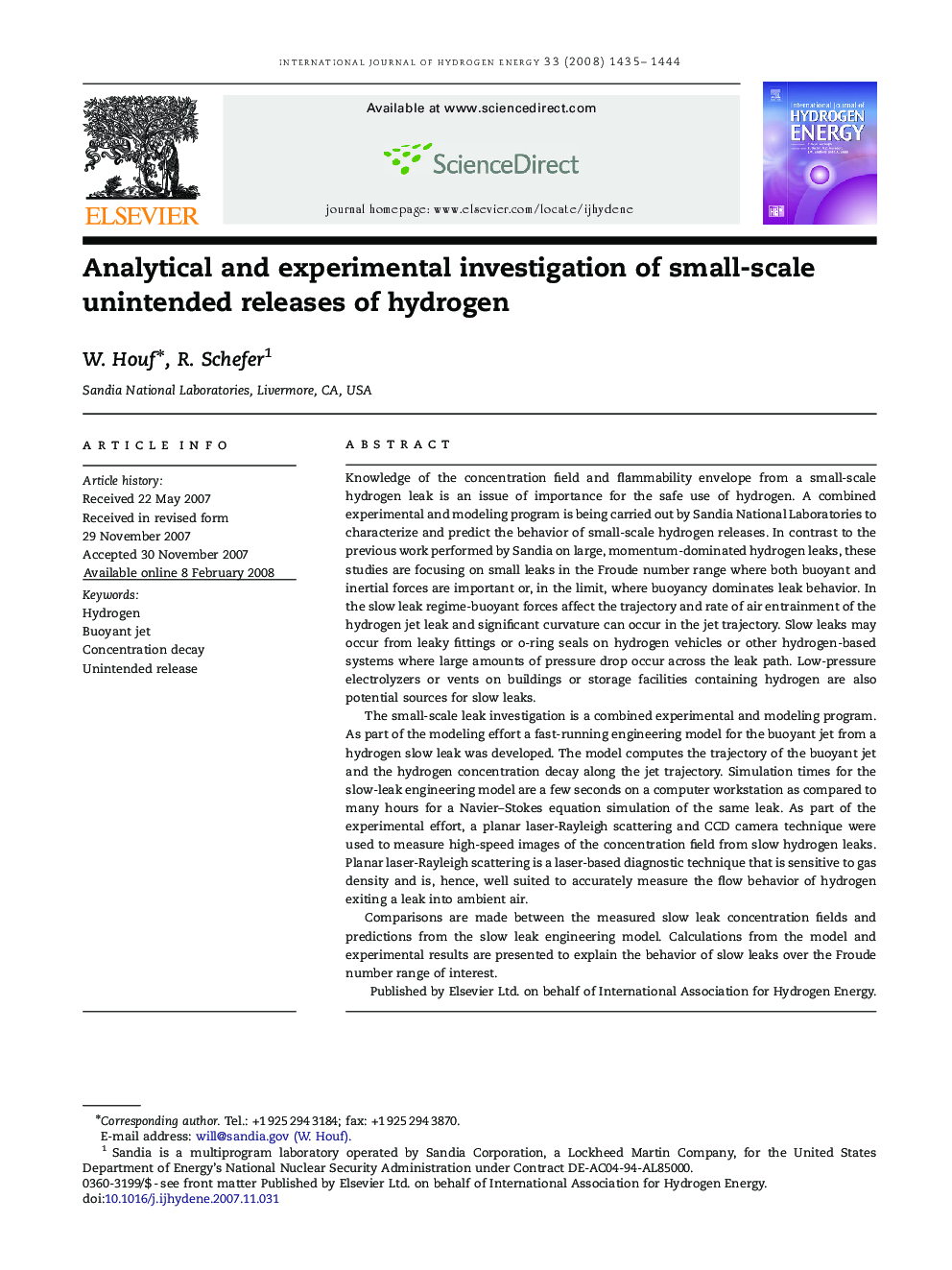| کد مقاله | کد نشریه | سال انتشار | مقاله انگلیسی | نسخه تمام متن |
|---|---|---|---|---|
| 1274721 | 1497662 | 2008 | 10 صفحه PDF | دانلود رایگان |

Knowledge of the concentration field and flammability envelope from a small-scale hydrogen leak is an issue of importance for the safe use of hydrogen. A combined experimental and modeling program is being carried out by Sandia National Laboratories to characterize and predict the behavior of small-scale hydrogen releases. In contrast to the previous work performed by Sandia on large, momentum-dominated hydrogen leaks, these studies are focusing on small leaks in the Froude number range where both buoyant and inertial forces are important or, in the limit, where buoyancy dominates leak behavior. In the slow leak regime-buoyant forces affect the trajectory and rate of air entrainment of the hydrogen jet leak and significant curvature can occur in the jet trajectory. Slow leaks may occur from leaky fittings or o-ring seals on hydrogen vehicles or other hydrogen-based systems where large amounts of pressure drop occur across the leak path. Low-pressure electrolyzers or vents on buildings or storage facilities containing hydrogen are also potential sources for slow leaks.The small-scale leak investigation is a combined experimental and modeling program. As part of the modeling effort a fast-running engineering model for the buoyant jet from a hydrogen slow leak was developed. The model computes the trajectory of the buoyant jet and the hydrogen concentration decay along the jet trajectory. Simulation times for the slow-leak engineering model are a few seconds on a computer workstation as compared to many hours for a Navier–Stokes equation simulation of the same leak. As part of the experimental effort, a planar laser-Rayleigh scattering and CCD camera technique were used to measure high-speed images of the concentration field from slow hydrogen leaks. Planar laser-Rayleigh scattering is a laser-based diagnostic technique that is sensitive to gas density and is, hence, well suited to accurately measure the flow behavior of hydrogen exiting a leak into ambient air.Comparisons are made between the measured slow leak concentration fields and predictions from the slow leak engineering model. Calculations from the model and experimental results are presented to explain the behavior of slow leaks over the Froude number range of interest.
Journal: International Journal of Hydrogen Energy - Volume 33, Issue 4, February 2008, Pages 1435–1444